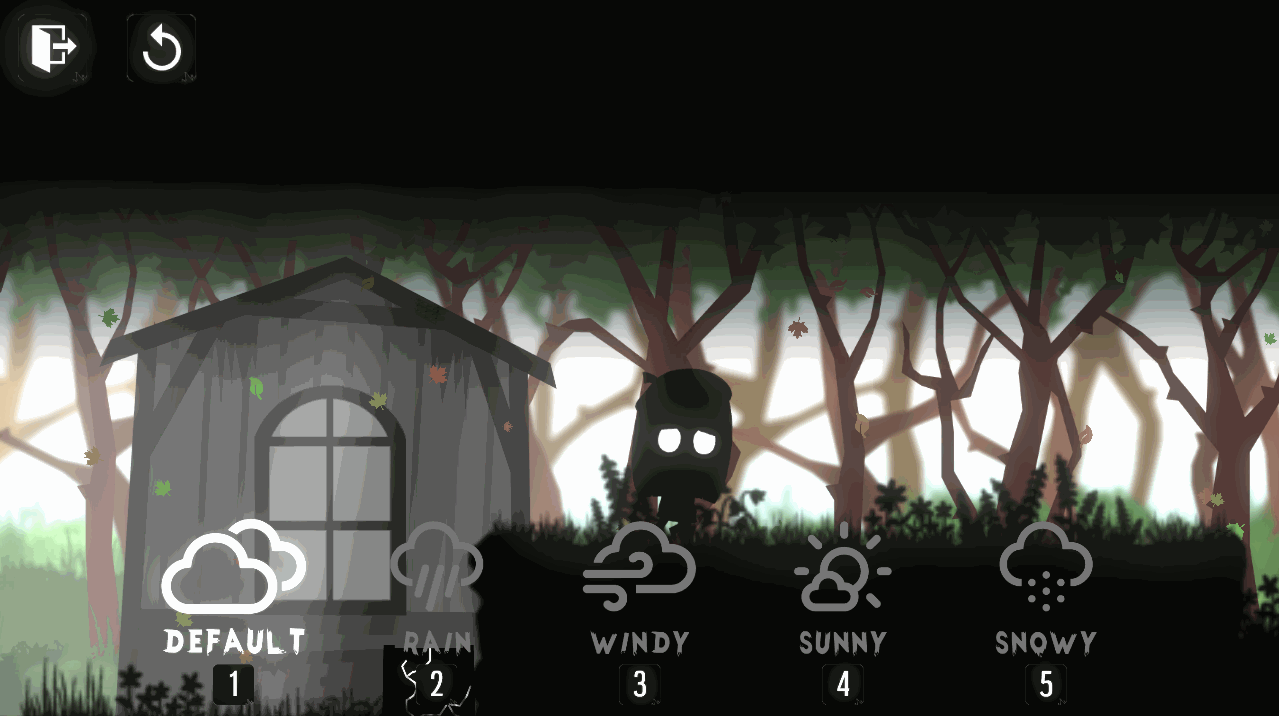The design process of Over the Edge add on
Over the Edge add on is a systemic add on to one of our existing project built in Unity aimed to enhance the player's experience by spicing up the already existing mechanics.
Role in OTE: Programmer / Designer
Engine: Unity2D
Team size: 2
Language: C#
Main contributions to OTE: Weather system / rapid prototyping

Weather showcase of Over the Edge
Origins
Over the Edge was an old group project where we decided to enhance its gameplay. Due to the lack of time to experiment with different mechanics, we decided to try a systemic approach to allow us to use its current mechanics with add on to create an entirely new experience.
This portfolio will cover my contributions and its process in this project.
Weather system
The rules of the system
We implemented a weather system that changed the player's experience through a play with physics and timing. Unity physics was used to implement most of the interactions.
We made sure each interactable of a category generally follow a rule in each season, which meant they are affected the same way. This allows the player to learn the system easily.
Physics
One of the existing mechanics we decided to spice up was the use of physics for actions such as movement and jumping.
We implemented some of our own physics to help us easily adjust the variables to suit the needs of each weather. Other than that we used Unity's built in physics.
Friction
-
By adjusting the slippery value of the floor based on the weather, we
are able to recreated different feelings for different weathers.
-
This affected the rainy and snowy weathers where all movable objects
will slide when moving.
Constant force
-
We were able to create a feeling of a fan blowing at the characters from
one direction by constantly changing the force value that each movable
object is being subjected to.


Character and box sliding due to slippery floor
Both movables (player and box) are being blown back by the wind.
Post Mortem
Project takeaways
Pointers I learnt from this project which I will take note of in future projects.
Consistency
An important thing I learnt in system design is that the interactions between objects
and systems must stay consistent.
-
If each object of the same category reacts differently to the system
-
It keeps the players guessing what a new interactable reacts to the system.
-
Easily recognizable interactable
-
Not only the interactions have to consistent, the type of interactable must be
easily recognizable by the player.
-
Reduces player's cognitive load through the use of heuristics when encountering
interactable objects. Example being when everything is frozen the player should
automatically know how to overcome them.
Simplicity
Not everything has to be complex to be a good mechanic
-
The main objective is to craft an enjoyable experience for the player to engage in.
-
No point making too many complex mechanics that takes the player a long time
-
to learn.
-
Something as simple as freezing up an interactable already forces the player to
change their plans when they were to encounter them.

Consistency where all interactable with doors will be closed by the wind.

Player breaking the ice off interactable objects.